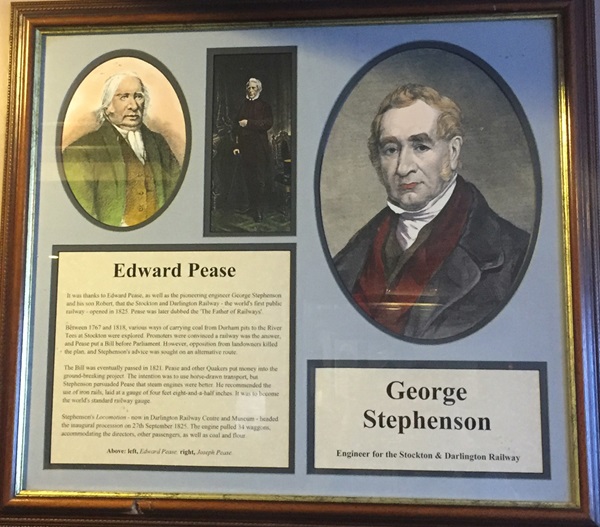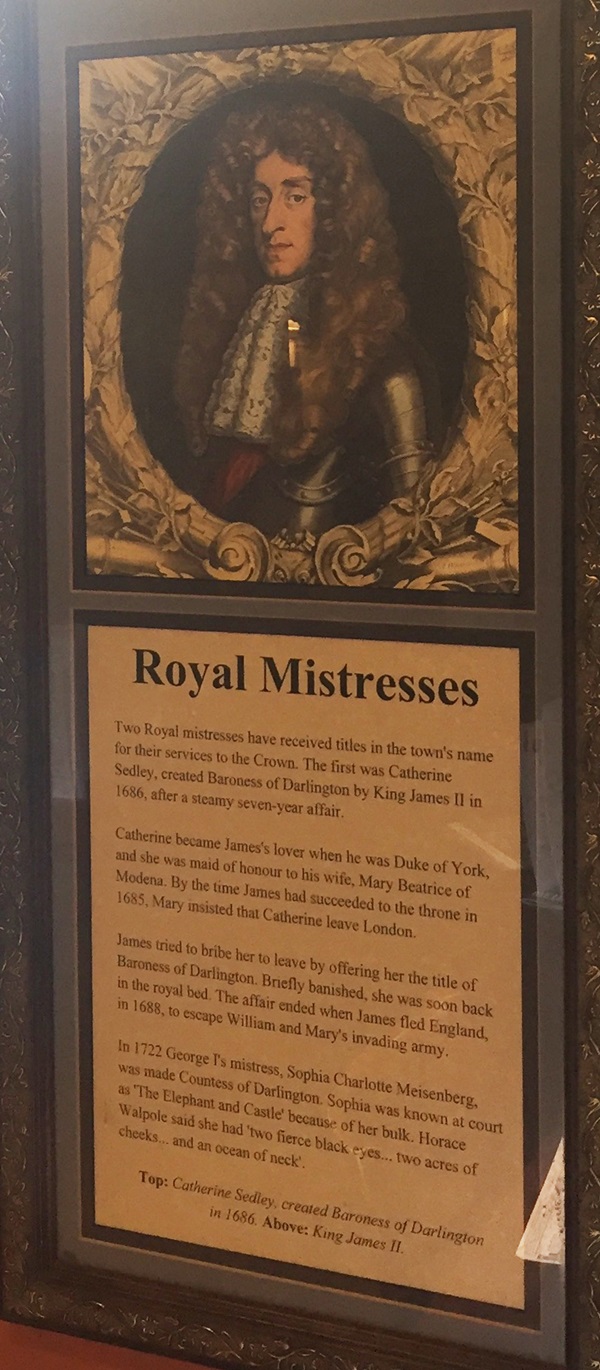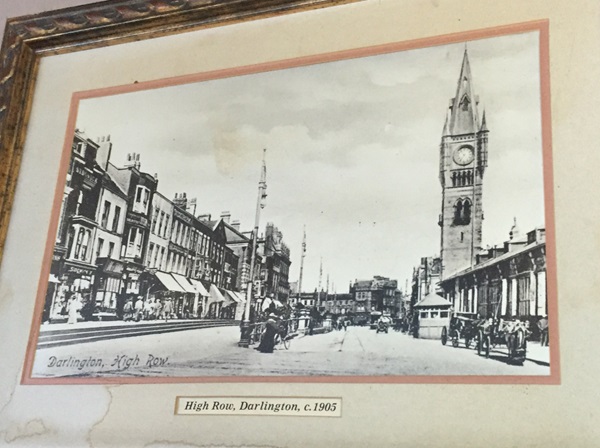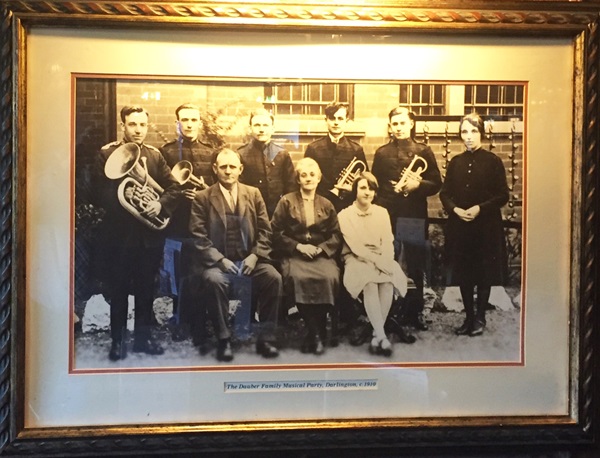Skinnergate was once the location of Darlington’s Skin Market. In 1621, the local council decreed: ‘Noe tanners shall bye any skins, but upon the Skynnehill.’ The long-gone tanners are remembered by the name of this Wetherspoon pub.
Prints and text about Edward Pease and George Stephenson.

The text reads: It was thanks to Edward Pease, as well as the pioneering engineer George Stephenson and his son Robert, that the Stockton and Darlington Railway – the world’s first public railway – opened in 1825. Pease was later dubbed “The Father of Railways”.
Between 1767 and 1818, various ways of carrying coal from Durham pits to the River Tees at Stockton were explored. Promoters were convinced a railway was the answer, and Pease put a Bill before Parliament. However, opposition from landowners killed the plan, and Stephenson’s advice was sought on an alternative route.
The Bill was eventually passed on 1821. Pease and other Quakers put money into the ground-breaking project. The intention was to use horse-drawn transport, but Stephenson persuaded Pease that steam engines were better. He recommended the use of iron rails, laid at a gauge of four feet eight-and-a-half inches. It was to become the world’s standard railway gauge.
Stephenson’s Locomotion – now in Darlington Railway Centre and Museum – headed the inaugural procession on 27 September 1825. The engine pulled 34 waggons, accommodating the directors, other passengers, as well as coal and flour.
Above: left, Edward Pease, right Joseph Pease.
A print and text about royal mistresses of Darlington.

The text reads: Two royal mistresses have received titles in the town’s name for their services to the Crown. The first was Catherine Sedley, created Baroness of Darlington by King James II in 1686, after a steamy seven-year affair.
Catherine became James’s lover when he was Duke of York, and she was maid of honour to his wife, Mary Beatrice of Modena. By the time James had succeeded to the throne in 1685, Mary insisted that Catherine leave London.
James tried to bribe her to leave by offering her the title of Baroness of Darlington. Briefly banished, she was soon back in the royal bed. The affair ended when James fled England, in 1688, to escape William and Mary’s invading army.
In 1722 George I’s mistress, Sophia Charlotte Meisenberg, was made Countess of Darlington. Sophia was known at court as ‘The Elephant and Castle’ because of her bulk. Horace Walpole said she had ‘two fierce black eyes…two acres of cheeks…and an ocean of neck’.
Top: Catherine Sedley, created Baroness of Darlington in 1686
Above: King James II.
A photograph of High Row, Darlington, c1905.

A photograph of the Dauber Family Musical Party, Darlington, c1910.

If you have information on the history of this pub, then we’d like you to share it with us. Please e-mail all information to: pubhistories@jdwetherspoon.co.uk